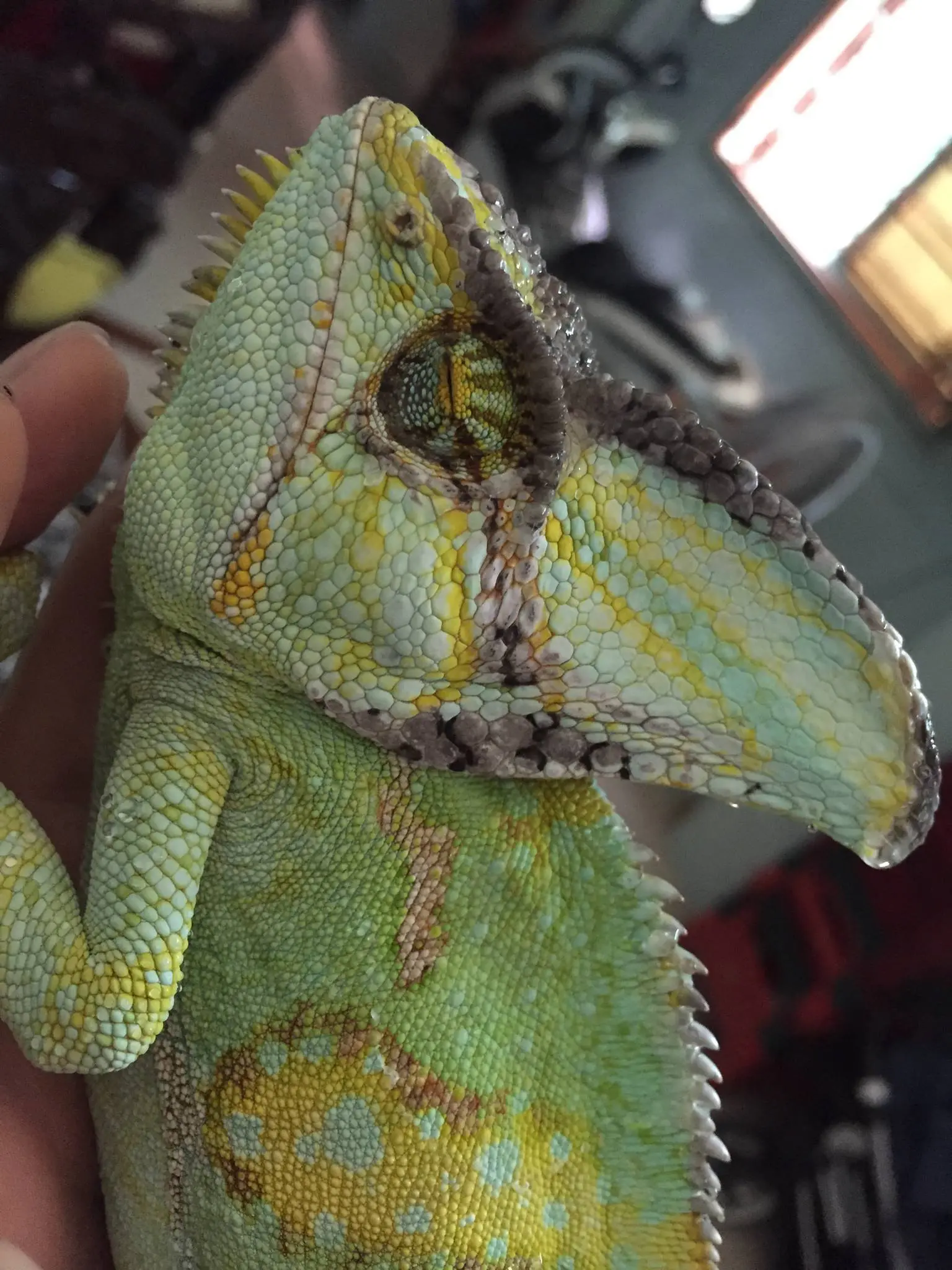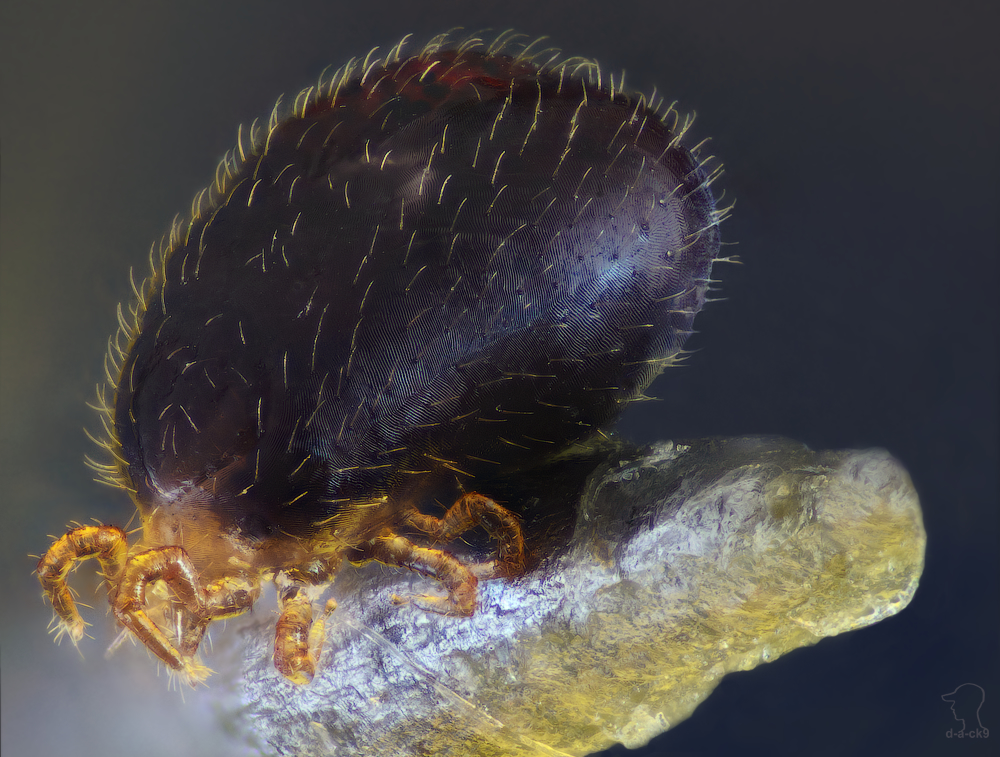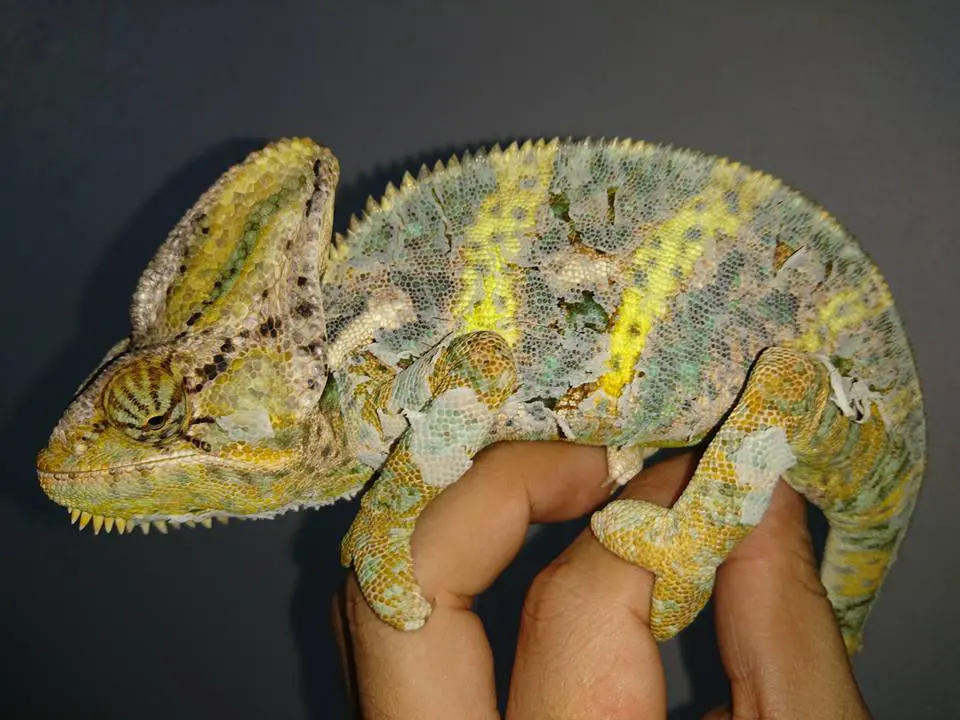Now and then a chameleon owner may notice a black spot or spots on their chameleons. Chameleons change all sorts of interesting and brilliant colors, but when in a relaxed state they are green. Black spots on the skin can be a cause of alarm as a reptile pet owner.
Here are some of the reasons your chameleon may have black spots.
Stress
It’s not uncommon for chameleons to show black spots when they are stressed.
The stress can be due to numerous factors, which include introducing them to a new enclosure, bringing your chameleon home for the first time, or placing your chameleon enclosure in a high traffic area.
If the black spots are due to stress, they should disappear as your reptile pet becomes more comfortable. If you have placed it in a high traffic area, it may be best to move it to a quieter place in the room.

More on chameleon colors and their meanings.
Burn
Chameleons love to sit in the sunshine and soak up the rays of the sun. This is why we provide our reptiles with heat lamps, to provide them with the heat and UVB that they need.
If your top branches are too close to the heat lamp or your chameleon is climbing the top of the screen, your chameleon stands a risk of getting burned.
If you notice a fresh burn on your chameleon, seek veterinary assistance immediately. This ensures the wound is carefully examined and proper treatment is provided.
Depending on how bad the burn is, your vet may need to remove dead tissue, reducing the risk of infection.
Abrasion
Chameleons are busy characters during the day and will climb up branches, hanging from vines and entertaining you with their busy antics. This puts them at risk of abrasions as they scratch their skin on branches and twigs.
A black spot is a good indication that there is damage occurred under the surface of the skin, the same as a human bruise. This will heal on its own over time.
As long as your chameleon continues with business as usual, you have absolutely no reason for concern.
Mite
Mites are parasites that live outside the body, not common with chameleons. Chameleons are able to get mites that are transferred to them from other reptiles.
Ophionyssus natricis is a parasitic mite that grows up to 1mm. They will hide in the enclosure and only come out to suck the blood of your reptile pet. When they feed you will see black dots on your chameleon.

Because they mostly feed at night, they are very hard to spot and are mostly identified when hiding in the enclosure or when they have drowned in water reservoirs.
Sterilizing the entire enclosure is the most effective way to eradicate the mites. Hot water and a good quality reptile sterilizer are essential.
Dry any wood in the oven on low for around an hour to kill any mites hidden in the wooden decorations. Boil all other decorations.
Check your chameleon for black spots and remove them with a Q-tip.
Reassemble the enclosure and check in a few weeks to see if the mites are still there or have been eradicated. If mites are still present, repeat the cleaning process.
Shedding

Chameleons shed their skin to renew the skin and allow for growth. Younger chameleons shed more than adults. The younger reptiles will shed every three to four weeks, with adults shedding once every couple of months.
The skin will flake and fall off, sometimes with the assistance of the reptile. It’s not uncommon for your pet to not be interested in food during this process.
The entire shedding process can take anything from a few hours to a few days, depending on the type of chameleon you have. When they have finished, there shouldn’t be any flakes left.
Shedding that takes place for more than three days indicates a problem, which should be low humidity.
If your chameleon isn’t completing the shedding process it is at risk of infection, as the skin can harbor fungus and bacteria. This will show as black spots.
Increase humidity and provide regular misting to provide adequate moisture to help your pet get rid of the last of the skin.
Cricket Bite

While crickets are the staple food for your chameleon, they also try and defend themselves when about to be eaten.
It is not uncommon for crickets to try and sometimes succeed in biting your chameleon. The bites are not harmful but will cause bruising, which will show up as black spots.
Fungal Infection/ Dermatitis
Fungal infections are common in chameleons and if not treated, they can be fatal. Fungal infections show as growths on the skin, often with a fuzzy type appearance.
Remember that these infections can be contagious. If you are housing your chameleon with others, remove it into quarantine immediately and seek veterinary assistance.
Summary
Knowing some of the reasons why your chameleon has black spots can help you narrow down the cause to ensure you provide adequate treatment.
Stress and bruising appear to be the leading cause of black spots in chameleons, both of which will disappear over time.